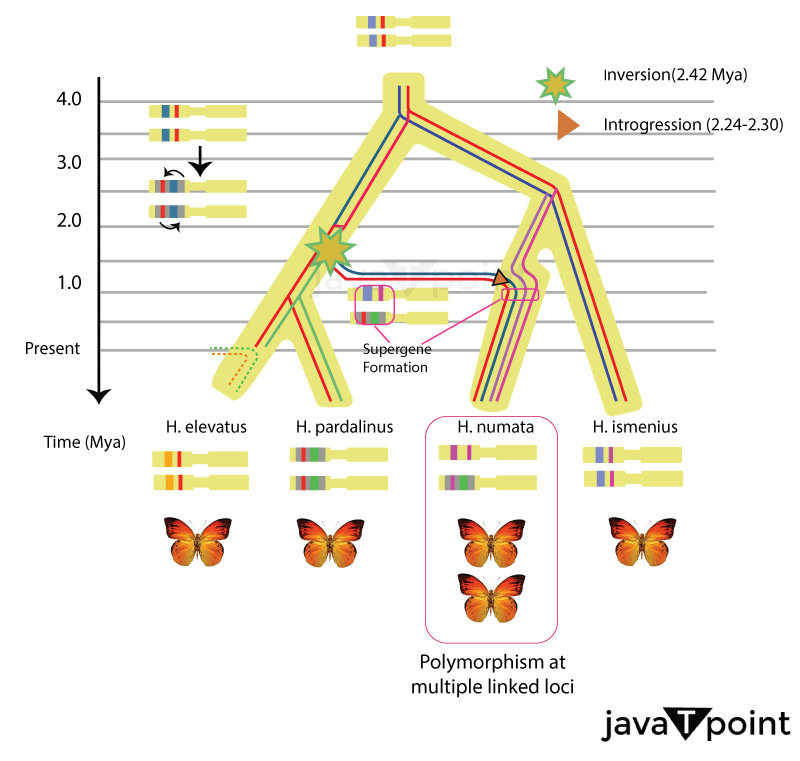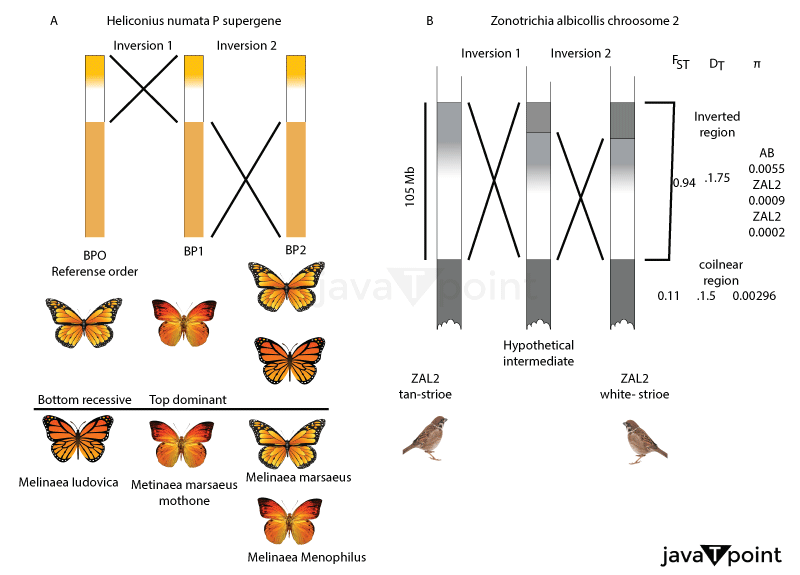SupergenesSupergenes are fascinating in genetics and have intrigued researchers due to their distinct characteristics. These gene sets, inherited as a single marker, encode complex phenotypes through joint action. Although they're found in more organisms, much remains unknown about their origins and evolution. One fascinating feature of supergenes is how they can remain intact within a population despite recombination events that would typically separate them. Some theories propose that these gene clusters provide a selective advantage to individuals who possess them, enabling them to persist over time. Supergenes are being studied to understand how they evolve over time. It is believed that these gene clusters may come from duplications or inversions during meiosis, but the exact mechanisms involved are still being researched. DefinitionA Supergene is a chromosomal region that includes multiple neighboring genes inherited together due to close genetic linkage, resulting in much less recombination than usual. A supergene region may contain a few functionally related genes contributing to a shared phenotype. These genes can form a supergene through linkage by physical or statistical associations. Variants of these genes combine to create haplotypes, which are sequences of markers along small sections of the genome. 
Origin of Super GenesRonald A. Fisher predicted the existence of supergenes related to Batesian mimicry systems in butterflies, where a harmless species resembles a harmful model species to avoid predation. This phenomenon has been observed in butterfly populations worldwide. Fisher's prediction proposes that supergenes control traits related to Batesian mimicry and may be located on non-sex chromosomes. This discovery could change our understanding of genetic transmission within populations. Classically, supergenes evolved from less tightly-linked genes coming together via chromosomal rearrangement or reduced crossing over. This occurred due to the selection of particular multilocus phenotypes. Supergenes were thought to have evolved from genes becoming more closely linked due to selection for specific traits. Examples include the supergenes involved in Batesian mimicry in Papilio memnon, which affect wing and body color as well as the presence of long projections. The origin of supergenes is based on Nabours' work on polymorphism in Grouse Locusts, where the color patterns are controlled by 13 genes that recombine fairly quickly. In Apotettix Eurycephalus, these genes form two tightly linked groups with 7% crossing-over between them. In Paratettix Texanus, there appears to be complete suppression of crossing-over among 24 out of 25 color-pattern genes. It was concluded by Darlington & Mather that the morphs accountable for this have gradually accumulated into a group functioning as a single switch mechanism. Moreover, this explanation was undertaken by E.B. Ford and included in his ecological genetics accounts. Supergene ProcessSupergene processes usually stick to the formation of "porphyry and epithermal deposits." This causes a zoned weathering profile in the upper part of all deposits, as well as the growth of "blankets" constituted of supergene minerals. Characteristics of Supergenes
Working of SupergenesSupergenes are a fascinating chromosomal phenomenon observed in many species. They consist of multiple neighboring genes inherited together due to close genetic linkage, resulting in much less recombination than expected and a unique mode of inheritance. 
The exciting thing about supergenes is that they can occur from genomic rearrangements between different variants of the supergene region. It means that even within one species, individuals may have various versions or arrangements of the same set of genes due to this process. Furthermore, we've observed that a supergene region may contain only a few functionally related genes contributing to a shared phenotype. It highlights the critical role these regions play in driving specific traits and adaptations within populations. Overall, supergenes are an intriguing area of study for geneticists and evolutionary biologists. Although not fully understood, we continue to unravel their complex mechanisms and implications for biodiversity and adaptation in nature. ConclusionIn conclusion, supergenes are fascinating genetic aspects discovered in various species. They perform a crucial role in discovering compound traits and behaviors such as mimicry as well as social behavior. Supergenes have shed light on the mechanisms behind genetic linkage and recombination. Furthermore, supergenes have practical uses in agriculture and conservation biology. Knowing the genetic basis of desirable traits can improve breeding programs for crops and livestock. In conservation biology, understanding supergenes can help preserve endangered species by identifying vital genes that aid their survival. FAQS1. How do supergenes form? Classically, scientists hypothesized that supergenes evolved from genes that were initially not closely linked. It takes place through chromosomal realignment or decreased crossing over because of selection for numerous multilocus phenotypes. 2. Why are supergenes essential? Supergenes allow for maintaining a complex, balanced polymorphism without creating maladaptive intermediates. 3. What's a supergene in genetics? As it has evolved into what scientists call a "supergene" - a category of selfish genes on similar chromosomes that are assumed to be together. 4. What causes supergene enrichment? Supergene" sulfide enrichment, also known as secondary enrichment in geology, is the natural process of upgrading buried sulfide deposits. Moreover, this takes place with the help of secondary deposition of metals which disappear as sulfates in water percolating by way of the oxidized mineral zone close to the surface. 5. Are there supergenes in humans? Supergenes help organisms adapt, but we don't know much about them in humans. 6. What's the "Supergene process"? Supergene is defined as near-surface processes and their products discovered by sloping water and gas at minimum temperature and pressure. On the other hand, a Hypogene is appeared by ascending water and gas at more temperatures and pressure.
Next TopicViral Diseases
|
 For Videos Join Our Youtube Channel: Join Now
For Videos Join Our Youtube Channel: Join Now
Feedback
- Send your Feedback to [email protected]
Help Others, Please Share










